Last updated: June 30, 2023
Owning a horse can bring lots of fun, get you outdoors, and keep you active. Picture yourself astride a horse, feeling the steady rhythm of its steps, breathing in the fresh air as you ride under the open sky. This is not just an exhilarating form of exercise, but it’s also a great way to boost your mental well-being.
Once you become a horse owner, a whole new world opens up to you. However, it’s crucial to remember that horse ownership also comes with responsibilities. One of these is ensuring you have the right equipment, both for the care of your new companion and for your riding activities.
In this guide, I cover everything you need to know about horses: what they eat, how much space they need, and more. I provide tips on choosing a horse, using the right gear, dressing properly for riding, and finding a good place for your horse to live. So, buckle up and keep reading as we delve into the essentials you’ll need in this exciting journey of horse ownership.
Understanding the Responsibilities of Horse Ownership
Owning a horse is a wonderful experience, but it comes with significant responsibilities that require daily attention. It’s not just about riding into the sunset; there’s a lot of work behind the scenes that ensures your horse is healthy and happy.
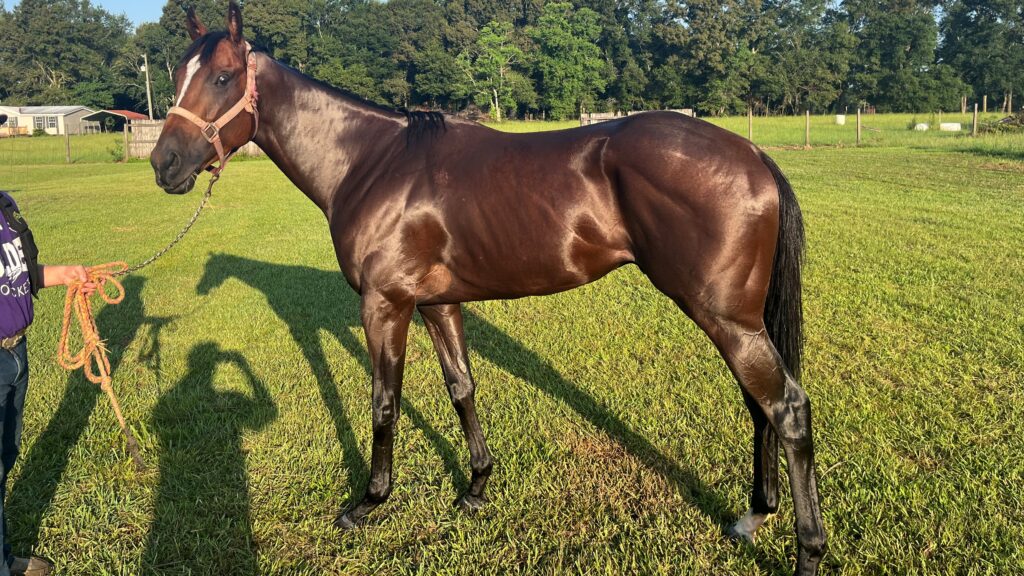
Daily Care
First, daily care is crucial. This involves feeding your horse a balanced diet which typically includes hay, grains, and plenty of fresh water. Grooming is also a key part of daily care, which not only keeps your horse’s coat shiny and healthy but helps you check for any skin issues or injuries.
Additionally, exercise is vital. Horses need regular physical activity to maintain their health, whether it’s through riding, lunging, or simply letting them roam in a secure paddock.
Veterinary and Farrier Care
Secondly, regular veterinary and farrier care is non-negotiable. Just as we need routine check-ups, so do horses. Veterinarians can spot potential health issues before they become serious and provide necessary vaccinations and dental care.
Equally important is regular farrier care, as proper hoof care and shoeing are critical for a horse’s health and performance. Remember, prevention is always better than cure. Maintaining a schedule for both veterinary and farrier visits ensures that your horse stays in optimal health.
Time and Resources
Lastly, owning a horse requires a significant commitment of both time and resources. Time, because horses need daily care and cannot be left alone for extended periods. Resources, because the cost of feed, farriers, veterinarian visits, grooming supplies, and other needs can add up.
However, despite the responsibilities and commitments, the bond you create with your horse and the joy it brings makes it all worthwhile. Now that you understand the basics, let’s delve deeper into what it means to be a horse owner. Keep reading to learn more about how to give your horse the best care possible.
Once you are ready to take the next step in your horse ownership journey, I recommend reading my article on horse training for beginners. It’s a step-by-step guide that’s sure to provide you with a solid foundation to get you started training horses.

Choosing the Right Horse
Buying the right horse is a critical step in your journey toward horse ownership. It’s not just about picking the horse with the most beautiful coat or the one that catches your eye first. There are several factors to consider, especially if you’re a first-time owner.
First off, you need to think about the horse’s temperament. You want a horse that is calm and easy to handle, especially if you’re just starting. A horse’s age is also important. While young horses can be a joy to raise and train, they require a lot of time and patience. On the other hand, older horses might be better trained but could have health issues.
Training is another aspect to consider. A well-trained horse can make your initial horse ownership experience smoother and more enjoyable. Also, always look into a horse’s health before making your decision. A horse with existing health issues might not be the best choice for a beginner.
Next, let’s talk about breeds. Different breeds have different characteristics, strengths, and weaknesses. For instance, Thoroughbreds are known for their speed and are often used in racing, while Quarter Horses are versatile and known for their abilities in a wide range of equestrian activities. Researching and understanding the traits of different breeds can help you make a more informed decision.
Finally, where and how to get your horse? You can buy a horse from a reputable breeder or consider adopting from a rescue organization. Both options have their pros and cons. Buying from a breeder often gives you more choices and detailed background information about the horse. On the other hand, adopting a horse can be a rewarding experience, giving a horse in need a loving home.
Here is a list of good horse breeds for beginners:
Costs of Horse Ownership
Embarking on the journey of horse ownership is an exciting experience, but it’s important to be aware of the costs involved. Financial planning is key to ensuring that you can provide the best care for your equine companion. On average, you can expect to spend about $4,000 to $6,000 per year on horse care.
However, this can vary depending on numerous factors, such as your horse’s age and health, as well as your location and the level of involvement you want in equestrian activities. Let’s break down the costs of owning horses into three categories: upfront, ongoing, and hidden costs.
Upfront costs include the purchase price of the horse, which can vary widely depending on factors like breed, age, and training. Initial veterinary checks are also part of these costs, as they help determine the horse’s health before you take them home. Additionally, you’ll need to invest in tack, such as a saddle, bridle, and other riding gear, which can be quite an investment.
Ongoing costs are the regular expenses you’ll encounter as a horse owner. These include food, which typically consists of hay, grains, and supplements, as well as stable fees if you’re boarding your horse at a facility.
Bedding materials like straw or wood shavings must be purchased to ensure your horse’s comfort. Regular farrier visits for hoof care and shoeing, routine vet bills for check-ups, and insurance premiums are all part of the ongoing expenses.
Hidden costs, while not as frequent, can still put a dent in your budget if you’re not prepared. Emergency vet fees may arise if your horse experiences an unexpected illness or injury. Transporting your horse, whether for a competition or a move, can be costly as well. Additionally, equipment like tack and grooming supplies may need to be replaced over time due to wear and tear.
Being aware of the costs associated with horse ownership is essential to providing a happy, healthy, and secure environment for your horse. By understanding and planning for these expenses, you’ll be better equipped to face the financial challenges that come with owning a horse, ensuring a fulfilling experience for both you and your equine friend.

Basic Horse Care
Taking care of a horse involves a holistic approach, encompassing everything from feeding and grooming to exercise, training, and health monitoring. It’s all about ensuring your horse’s well-being and happiness.
Feeding and nutrition are fundamental to your horse’s health. A horse’s diet primarily consists of hay or pasture, along with grains or specialized horse feeds. Fresh, clean water should always be available. The exact amounts and types of feed will depend on your horse’s breed, age, size, and level of activity. Regular consultations with your vet or a horse nutritionist can help you maintain an optimal diet for your equine friend.
Grooming is not only about maintaining your horse’s appearance but also their health. Regular brushing helps remove dirt, promotes circulation, and gives you a chance to check for injuries or skin conditions. Hoof care is also part of grooming. Horses’ hooves need regular cleaning to prevent issues like thrush or laminitis. Scheduling regular farrier visits for hoof trimming and shoeing is crucial.
Exercise and training are essential for a horse’s physical health and mental stimulation. Regular exercise, whether through riding, lunging, or free roaming in a safe area, keeps your horse in good shape. Training, on the other hand, helps establish good behavior and can also be a form of exercise.
Finally, health monitoring is a vital part of basic horse care. Regular veterinary check-ups can catch potential health issues early. Familiarizing yourself with common health issues in horses, like colic or respiratory problems, allows you to spot any worrying signs and seek help promptly.
Taking care of a horse can be a lot of work, but with knowledge, commitment, and a bit of love, it’s an incredibly rewarding experience. Remember, a healthy horse is a happy horse, and a happy horse makes a happy owner.
Tips for grooming your horse
Every horse owner should know the basics of grooming a horse. You may think it’s not important, too time-consuming or difficult, or that you don’t have time, but please take a moment to read the rest of this article and learn about your horse’s health.
Brushing your horse is a quick and easy way to check your horse for signs of illness and injuries. It’s also an excellent way to bond with your horses and keeps them looking good. Regular grooming will help maintain healthy skin, coats, hooves, and more – it will help your horse’s social skills.
– A whole-body brushing with a curry comb is best done every few days to keep dirt from building up in the horse’s coat and also remove dead skin cells, which can lead to problems like rain rot or fungus/yeast infections if left unattended.
– – Hoof care is essential because having healthy feet helps your equine friend walk comfortably and keeps their hooves clean and free of debris which could lead to infections like thrush. Checking hooves daily is recommended – and look for cracks, chips, or other signs of wear.
– Horse teeth need to be checked regularly because an equine’s mouth is its only way to get food and water, so it needs to stay healthy. Some horses may also show signs that they are due for a dental if you notice the horse chewing on something nonstop (this could mean they have mouth discomfort).
Grooming summary: to maintain your horse’s health, check its hooves every day; groom the their coat regularly with a curry comb; care for a coat by brushing out debris once per week during winter months; check teeth at least once per month but ideally twice each month and
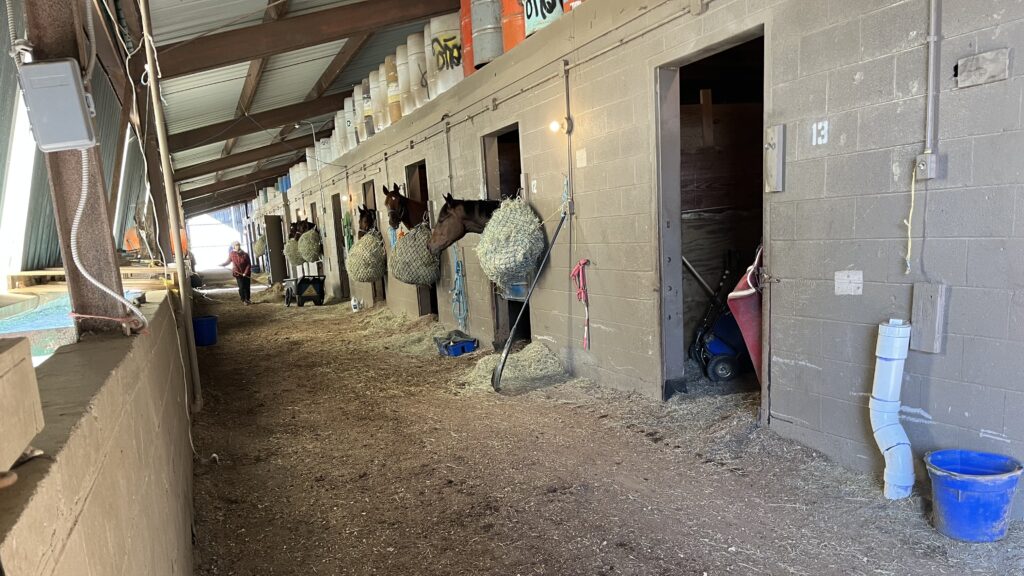
Setting Up Your Barn or Boarding
The criteria for a good horse barn are universal. It should provide shelter from harsh weather, be well-ventilated, and have plenty of light. It should also be free of hazards, such as protruding nails or sharp edges. The stalls should be large enough for your horse to move around comfortably, and the flooring should be safe and non-slip. It’s also important to have a secure area for storing feed and tack.
If you’re setting up your own barn, plan for adequate space not just for the horse but also for storage of hay, bedding, and equipment. Regular maintenance is key to ensuring a clean, safe environment. This includes daily mucking out, checking for and fixing any damages, and maintaining good pest control.
However, not everyone has the space or resources for home stabling. That’s where boarding comes in. Boarding your horse at a professional facility can offer benefits like access to experienced staff, various amenities, and the opportunity for your horse to socialize with others.
But there are trade-offs to consider between home stabling and boarding. Home stabling allows you more control over your horse’s care and environment, and you can spend time with your horse whenever you wish. On the flip side, it involves a lot of work and commitment.
Boarding, meanwhile, saves you the daily chores and provides professional care for your horse. But it can be more expensive, and you might have less flexibility in your horse’s care and routine.
Whether you choose home stabling or boarding, the most important thing is that your horse is well cared for and happy in their surroundings. Both options can work well, depending on your lifestyle, resources, and the needs of your horse.
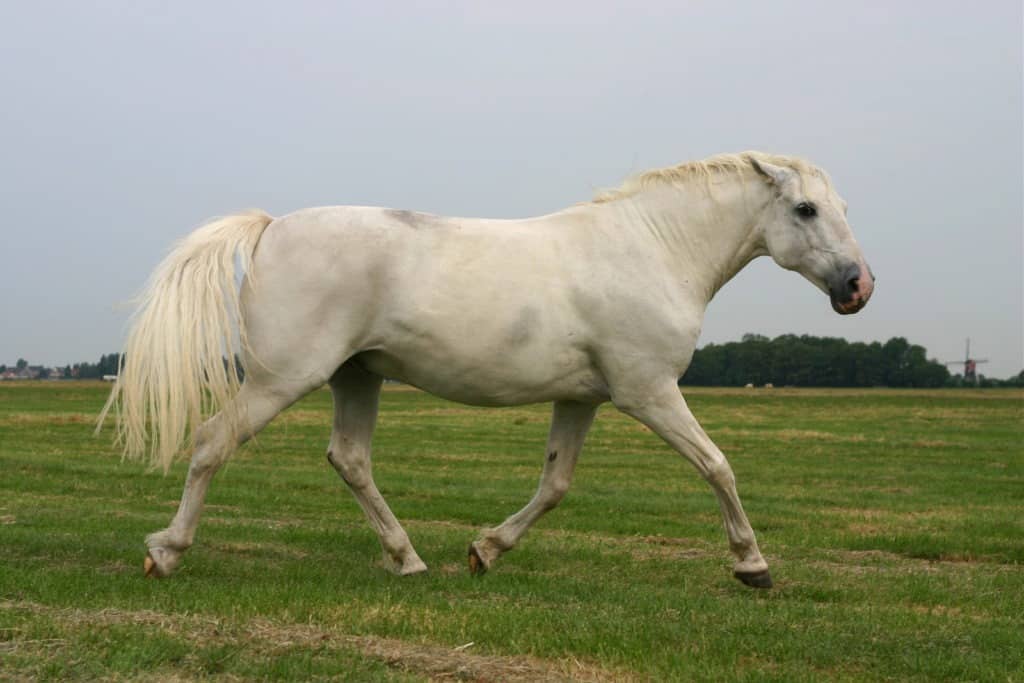
Understanding Horse Behavior
Understanding horse behavior is a crucial part of horse ownership. It can tell you a lot about your horse’s mental and physical state, helping you build a better relationship with your horse and identify any potential health issues.
Basic horse behaviors can indicate how your horse is feeling. For instance, when a horse pricks its ears forward, it’s usually focusing on something in the distance. If a horse’s ears are pinned back flat against its head, it could indicate aggression or fear. A horse will often nudge or nuzzle with its nose as a sign of affection or curiosity.
A happy, healthy horse will generally have a calm and alert demeanor. It will show an interest in its surroundings, maintain a regular eating routine, and have a glossy coat. Its eyes should be bright and clear, and it should move freely and energetically. Regular, healthy bowel movements and a good level of interaction with other horses are also signs of a well-adjusted horse.
On the other hand, signs of distress or illness can include changes in behavior, such as increased aggression or lethargy. Physical signs might include lack of appetite, weight loss, dull coat, runny nose, cough, or unusual stool.
Changes in posture, such as frequently lying down or standing with a hunched back, can indicate pain or discomfort. Also, look out for excessive pawing, rolling, or kicking at the belly, as these can be signs of colic, a serious equine health issue.
Being observant and understanding your horse’s behavior is key to ensuring its well-being. If you ever notice any unusual behaviors or signs of illness, it’s best to consult with a veterinarian immediately. Remember, your horse’s behavior is one of the best indicators of its overall health and happiness.
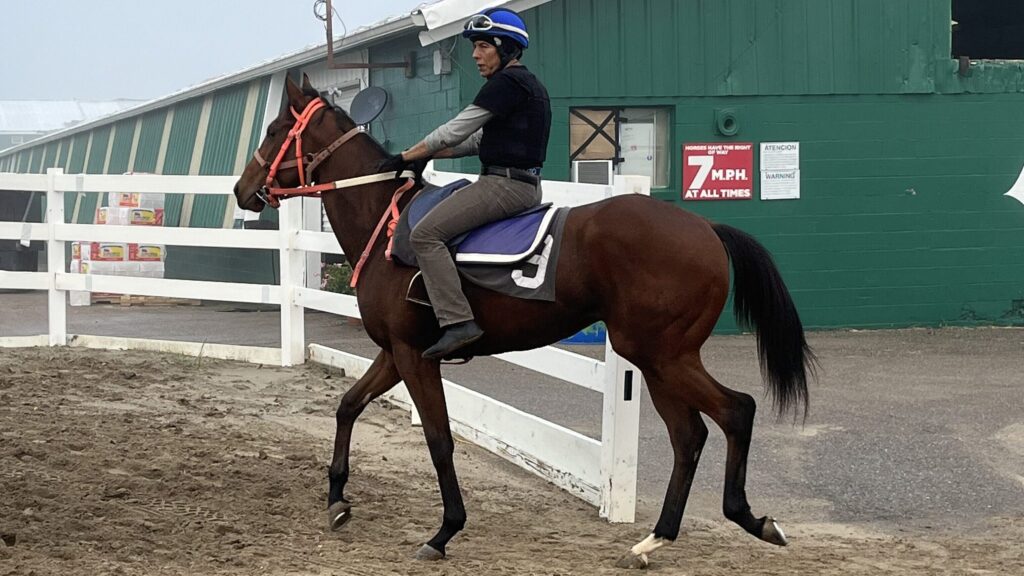
Essential Horse Tack for Beginners
When starting your journey into horse ownership, having the right tack is crucial. Tack refers to the various equipment used in equestrian activities, and the right tools can make a significant difference in the safety, comfort, and success of both the rider and the horse.
- Saddle: This is where you’ll be seated when riding. It’s important to find a saddle that fits both you and your horse well to ensure comfort and control.
- Bridle: This piece of equipment helps you steer the horse. It includes the bit, which goes into the horse’s mouth, and the reins, which you hold.
- Helmet: Safety is paramount when riding. A well-fitted helmet can protect you from serious injury.
- Halter and Lead Rope: These are used for leading and tying up your horse.
- Grooming Supplies: Brushes, hoof picks, and mane and tail combs are essential for keeping your horse clean and comfortable.
- Horse Blankets: Depending on your climate and your horse’s coat, you might need blankets for warmth in the winter.
- Stirrups and Stirrup Leathers: These support your feet when riding and are attached to the saddle.
- Saddle Pads: These provide extra cushioning between the saddle and your horse, protecting them from friction and pressure.
Starting with these basic pieces of tack will set you up for success in your horse-owning journey. Remember, it’s always important to ensure that all tack fits correctly and is kept clean and in good repair for the safety and comfort of both you and your horse.
Essential Riding Clothes for New Horse Owners
As a new horse owner, you’ll not only need equipment for your horse but also appropriate clothing for yourself. Dressing correctly for horse riding can enhance your comfort, safety, and overall enjoyment of the experience. Here are some essential items you should consider:
- Riding Helmet: A well-fitted riding helmet is a must for safety. It can protect your head from injury in case of a fall.
- Riding Boots: Look for sturdy footwear with a small heel to prevent your foot from slipping through the stirrup. Riding boots come in many styles, including jodhpur boots, long-riding boots, or paddock boots.
- Breeches or Jodhpurs: These trousers are designed specifically for riding. They’re flexible and durable, allowing you to move comfortably in the saddle. Jeans are also a good option for horse riding.
- Body Protector: Especially important if you’re jumping or riding a young or unpredictable horse, a body protector can help shield you from injury in case of a fall.
Remember, comfort and safety are paramount when selecting riding clothes. It’s worth investing in good quality items that will withstand the rigors of riding and keep you safe and comfortable as you enjoy your horse ownership journey.
Below is a YouTube video that provides new horse owners with some helpful tips.
Tips for feeding your horse.
So without any further ado, let’s jump into our list of 8 tips for proper horse feeding:
1) Horses need to eat about 2 percent of their body weight in hay or other forage daily. Hay is an essential part of their diet and will help keep their digestive system running smoothly throughout the day.
2) Make sure you are feeding your horse fresh hay; some horses won’t eat moldy hay, which can make them sick.
3) Feed your horses a mixture of hay, grains, and supplements if you are working and exercising them. Grain provides extra energy; when they work, they need more than just fresh hay to stay strong and well-nourished.
4) Do not overfeed your horse. Overfeeding grain can cause colic and laminitis, serious equine diseases that are sometimes fatal.
5) Do not make sudden changes to their diet. Horses have sensitive digestive systems, and quick dietary changes can lead to severe illness.
6)Feed your horse on a schedule; I suggest you feed it in the morning before doing anything else.
7) Pay attention to their feed bucket and periodically watch them eat to ensure they aren’t dropping feed. Dropping feed is a sign they need their teeth floated or could indicate other health problems.
8) Make sure there’s always fresh water available for your animal! Horses drink about 10 gallons of water per day, and although they can live a good while without food, a horse will die without water after two days.

Signs Your Horse is Sick
In any animal, illness can manifest itself in many different ways. For horses, one of the most common signs of disease is a behavior change- from being sluggish to acting hyperactive. Other symptoms may include changes in eating and drinking habits and changes to their coat condition. Here are 10 key signs you should look for if you suspect your horse is sick.
– Lethargy and decreased activity levels when horses start to get sick, they’ll typically stand quietly, hang their head a little lower than usual, and let their ears fall some, and you may notice their eyes not quite as wide and bright as usual.
– Lack of appetite or increased thirst for water could be due to pain from being sick, which causes them not to want food, and other causes such as colic (abdominal pain), ulcers, etc…
– Inability to urinate, excessive urination, or difficulty in passing urine. This may be accompanied by a bladder infection (cystitis), which can sometimes cause foamy urine and even blood to appear in the urine. You must contact your vet if this happens so they can prescribe some antibiotics.
Another possible symptom would be straining when trying to pass urine (dysuria). If either condition persists for more than a few days, you should seek veterinary care immediately because the excessive straining could lead to kidney damage over time without intervention from an animal doctor.
– Changes in behavior such as irritable disposition and aggression against humans or other horses. Contact your vet if you notice a sudden change in your horse’s behavior. It could have a tumor or other serious health condition.
– Diarrhea could be accompanied by excessive gas or loss of appetite. Diarrhea may contain mucus or blood in some cases (dysentery). As with any illness, you should contact your vet if this happens so they can identify the cause and determine a course of treatment.
Sometimes the underlying issue is something as simple as an upset stomach from too much sugar consumption or eating spoiled food, but there are also many serious conditions such as parasites or colitis; for example, you should not ignore it.
– Abnormal discharge coming from the eyes, nose, mouth, genitals, rectum, etc. This can be normal in some cases, but a discharge that is pus-like, green in color, or smells strong suggests the horse has an infection and require veterinary attention to diagnose them properly and prescribe a treatment.
– Painful swellings, lumps, or bumps anywhere on the body. These might be cancerous tumors (skin), abscesses from a bite wound (underneath the skin), or cysts in organs.
– Weight loss. This can indicate several things, including parasites, colitis (inflammation of the large intestine), or laminitis (inflammation of the hooves).
– Hoof abscesses are infections that manifest themselves between the sole and frog of horses’ hoofs; if left untreated, they can cause lameness.
Constant Sneezing is often a symptom of bacterial or viral infections.
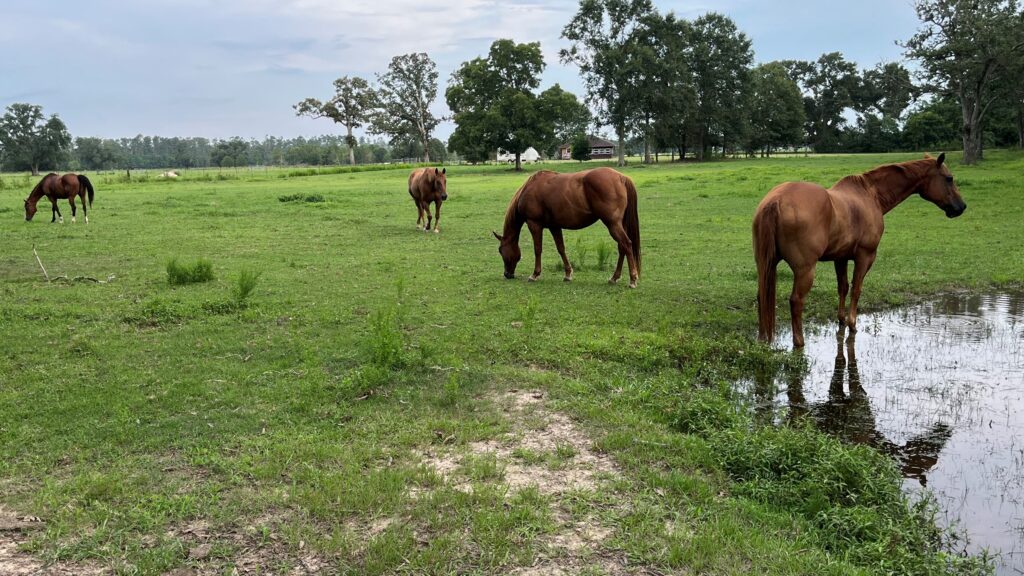
How Much Land Does One Horse Need?
We’re lucky in that we have plenty of acreage with large pastures available for our horses. However, I know some horse owners that try to cram multiple horses on small parcels. But how much land do you need if you only have one horse?
After looking at many different statistics, it turns out that, on average, you would need about 3 acres of land for one horse. However, this number will vary depending on the breed and your specific needs. However, a person experienced with caring for horses could get away with a lot less.
For example, I have a friend who is a farrier; he lives on less than an acre but has three horses. Each day he provides them with plenty of hay and exercises them in a public area. He knows how to care for horses and can keep them with little land.
If you live in an urban area with limited space or are just starting out as a first-time owner, then this might be all the room you’ll have to get started. But if you’re going for quality over quantity, having more than five acres available can give your horses abundant exercise space.
The closer you are to a natural resource such as water or wooded areas, the more your horses will enjoy it and be able to exploit their most basic instincts while still being close enough for an owner’s supervision!
This is even more helpful if living in non-rural areas where there may not be a lot of pasture areas, but being near woods can help reduce stress levels.
If you plan to build a barn, there are many things to consider. You should ensure that local zoning authorities have approved any land you intend to use for horses before buying one; some cities require a certain distance between homes, outbuildings, and farm animals, so do your research beforehand!
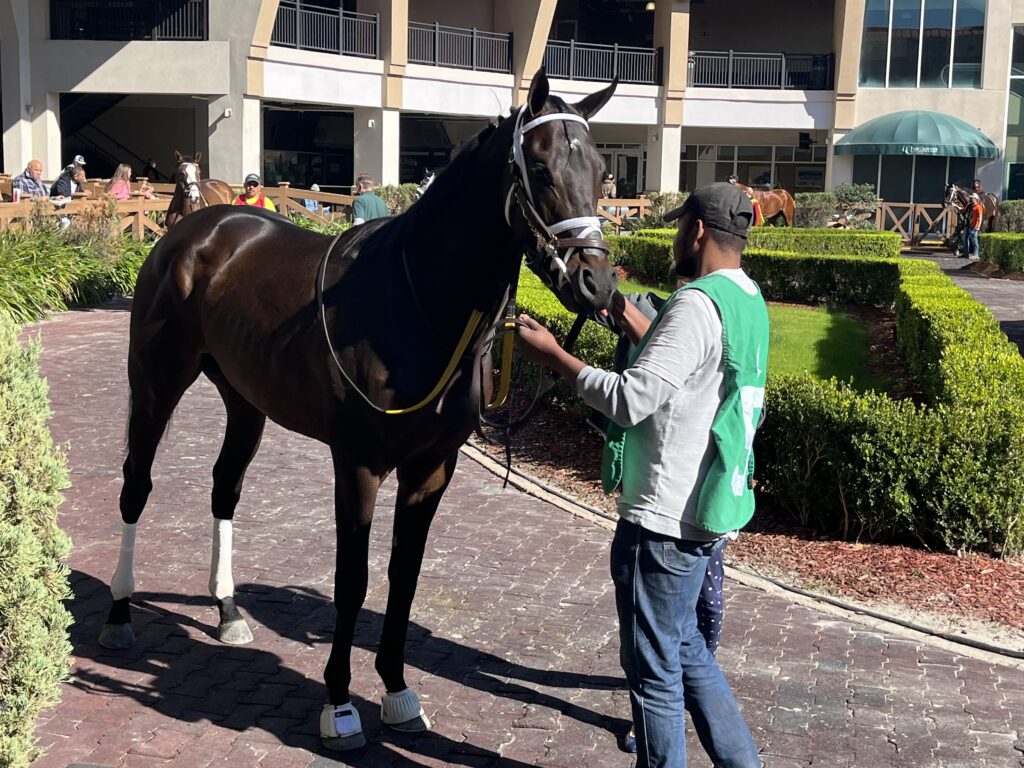
Conclusion
In this article, we’ve discussed a range of topics, from finding the right horse for you and your family, what type of feed is best for different horses, and how to take care of their feet.
Hopefully, after reading this, you have some ideas about whether or not it might be time for you to start looking into owning a horse. If so, there are plenty more resources out there on where to get started with everything from beginner riding lessons and caring for younger horses up through beginner training tips.
FAQ
What age horse is good for a beginner?
The right age horse for beginning riders can vary because, just like people, all horses aren’t the same and mature differently. But generally, a beginner should get a horse at least ten years old and well-trained.
How many times a week should I ride my horse?
You should be fine riding five times a week if the horse is fit. However, it depends on the horse’s age and condition and your riding goals. Keep an eye on your horse’s recovery time; he should return to normal breathing in less than 10 minutes after a vigorous workout.

About the Author: Miles Henry
Lifelong Horseman | Racehorse Owner | Published Author
Miles Henry brings over 25 years of hands-on experience training and owning Thoroughbred racehorses. Raised with Quarter Horses and Appaloosas, he’s spent a lifetime learning from horses—on the track, in the barn, and in the field. Today, he runs a small but successful racing stable in Louisiana and shares real-world insights on HorseRacingSense.com, helping horse owners, fans, and bettors navigate the sport with confidence.
📚 Books: View Miles’s books on Amazon »
🎧 Podcast Guest: Animal Tales Ep. 32 |
YouTube Interview
📩 Newsletter: Sign up for racing tips and horse care advice »
🔗 Follow Miles:
Twitter |
Facebook |
YouTube


